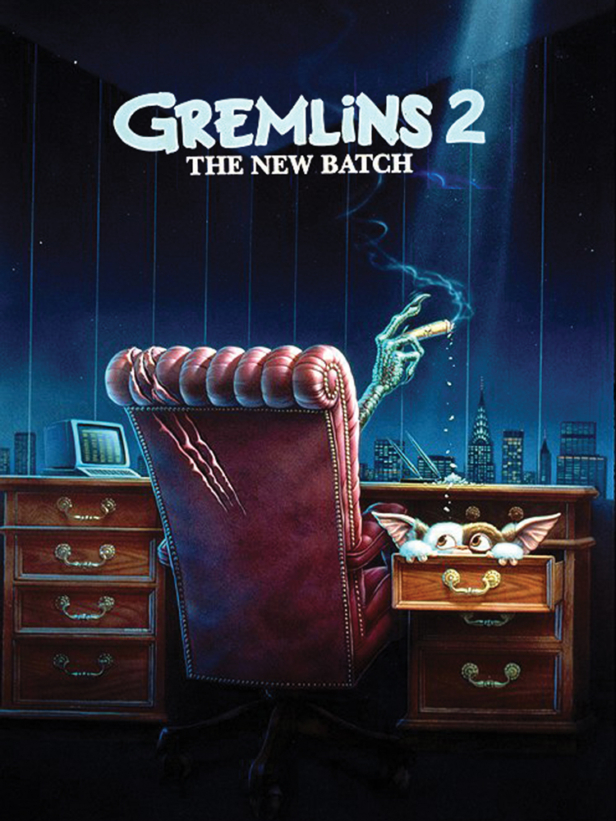“The approach was to try and make a picture about why there shouldn’t be a sequel to Gremlins,” laughs director Joe Dante, recalling the thought process behind 1990’s gloriously meta sequel Gremlins 2: The New Batch.
It took Dante and his producing partner Mike Finnell six years to start work on a follow-up to 1984’s original, itself an unexpected sleeper hit and the first movie released through Steven Spielberg’s burgeoning production company Amblin Entertainment. As executive producer, Spielberg entrusted Dante to bring screenwriter Chris Columbus’ ambitious small-town monster movie to life – and when audiences went wild for the result – sequel talk quickly began. But with Dante drained from the mammoth task of creating a feature-length puppet movie, he wasn’t exactly keen to return to the world of Mogwais and creature chaos.
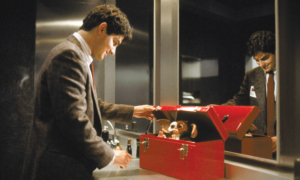
“Gremlins was an extremely difficult movie to make,” Dante tells us. “It started in Spielberg’s mind as a low budget horror but it quickly became apparent that it couldn’t be done convincingly on a low budget. We were inventing technology as we were going along – nobody had ever done a puppet film on that scale before so we were constantly experimenting. We even shut down production for a while just so we could do pure puppet footage, which was exhausting. I was pretty burned out,” he admits. “Once it was done the studio said ‘let’s do another one’ and I just couldn’t face it.” Undeterred, Warner Bros soldiered on, determined to extend the franchise yet unable to crack the code. “They diligently applied themselves to trying to figure out a way to make a sequel but because they never really had any faith in the film in the first place, they didn’t understand why it was a big hit – so they couldn’t replicate it.”
It wasn’t until Dante received an offer too good to pass up that he eventually considered returning. “After a number of efforts that didn’t pan out, they came back to me and said: ‘If you give us one of those Gremlins movies next summer, we’ll let you do whatever you want – you can make any kind of movie as long as it’s got Gremlins in it.’ That’s a rare opportunity.”
Like any sequel, Gremlins 2: The New Batch was bigger in scope and scale – transporting the action from the sleepy Kingston Falls to the Big Apple. It’s here where we find our hero Billy (Zach Galligan) working as a struggling concept artist for the synergy-focused businessman Daniel Clamp (John Glover). When one of the Clamp Building’s unlikely tenants – a genetics lab operated by the gleefully over-the-top Dr Catheter (Christopher Lee) – stumbles upon Billy’s Mogwai BFF Gizmo, it’s only a matter of time before a new gaggle of Gremlins have taken control of this gadget-filled building-of-tomorrow.
And yet, Gremlins 2: The New Batch became so much more; a film crammed with deliriously reckless in-jokes and self-referential humour that tested the limits of what audiences would accept from a studio sequel. “We wanted to raise the stakes,” says producer Mike Finnell, recalling the brief he and Dante set screenwriter Charles S Haas. “I don’t even know if the word ‘meta’ was in use back then, but that was the idea – to do a lot of self-referential stuff, like the scene where they make fun of the rules and what happens if you’re crossing a time-zone and there’s something caught in your teeth. Charlie just ran with it.”
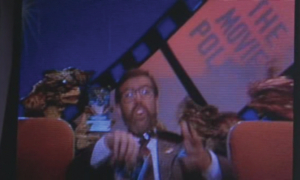
According to Dante, nothing and no one was safe: “The Nineties were going to be upon us and there were a lot of interesting things going on in the world. My concept was: this was like a giant Mad magazine parody of the first picture, which means not just making fun of movie tropes but also making fun of society.”
For Dante, the decision to play fast and loose was not only fun – it was creatively necessary: “The studio would have been happy with a repeat of the first picture but that didn’t interest me and I don’t think it would have satisfied the audience,” he reasons. “We decided to make fun of the whole concept of Gremlins – and that we’d asked the audience to suspend their disbelief long enough to buy the idea that there were certain rules you had to follow. I thought: ‘Let’s throw caution to the wind and do crazy stuff to remind people it’s a movie. Let’s let them know it’s a sequel and that we know it’s a sequel. We were going to make fun of the movie and the fact you came to see it,’” he chuckles.
“The original drafts were way too ambitious because they had Gremlins running around New York City – and these were the days before CGI effects,” adds Finnell. “Charlie came up with the idea of keeping it all inside this high-tech building – which allowed us to still do lots of New York City jokes. It was the perfect solution.”
With their location set, Dante and Finnell set the gears in motion for a new array of Gremlins to wreak havoc, with practical effects pro Rick Baker inheriting VFX duties from part one’s Chris Walas. “Chris wanted a directing career and Rick didn’t want to use Chris’ designs,” explains Dante. “So we came up with the idea of the gene splicing lab to create different kinds of Gremlins that Rick could design. That was what got him on board,” he reveals.
“Rick did a fantastic job,” says Finnell. “He did the Vegetable Gremlin, Brain Gremlin and the Bat-Gremlin – and of course we did the Batman joke because Batman had just come out,” he smiles, referencing the Bat-Gremlin’s flawless bat-symbol window escape.
“Rick did designs for Gremlins that we didn’t even use because there was only so much space in the movie. There was an Elephant Gremlin and a Gremlin that turned into Albert Einstein,” teases Dante. “I’m surprised we were able to cram in as many as we were.”
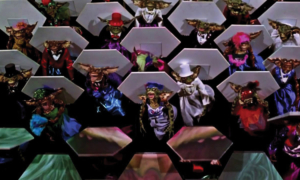
Technological advances also opened up new opportunities for Dante and Baker. “I was glad I didn’t take them up on doing another Gremlins right away,” admits the director. “In the intervening years, the tech changed to a point where things we could never get the Gremlins to do in the first movie were now easily accomplished. We could make Gizmo walk, dance and see his whole body. We were able to make the Gremlins talk with a device called the Gilderfluke, which allowed us to play back a pre-recorded voice,” he adds, referencing the tech responsible for bringing the Brain Gremlin to life.
“It was my idea to cast Tony Randall,” smiles Finnell on finding the right Gremlin voice. “I thought he had the perfect diction.”
Gremlins aside, there are aspects of Dante’s sequel that remain oddly resonant: “At the time we had then-billionaire – or at least he said he was – Donald Trump, who was in the news in New York. There was also another mogul called Ted Turner who had just bought the news station CNN,” explains Dante.
“Daniel Clamp was a combination of Trump and Turner,” confirms Finnell. “He has a TV station with all these different channels – some of which were parodies and now they really exist. Trump’s The Art Of The Deal had just come out and we parodied that with Clamp’s book I’ll Take Manhattan,” he smiles.
“He’s one of the funniest things in the movie,” admits Dante. “There was also a character played by Haviland Morris named Marla and it turned out Trump’s mistress was also named Marla – which we didn’t realise when we were making the movie. When the picture came out everyone said ‘this is so prescient!’. It was just an accident!”
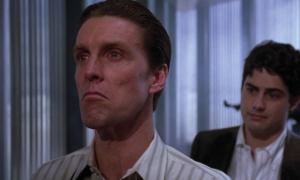
It wasn’t just the Clamp Building that fell victim to the Gremlins’ reign of chaos– the fourth wall took a thrashing too. “The scene where the film seems to break and the Gremlins take over the projection booth was controversial with the studio because they thought if people think the film is broken, they’ll leave,” remembers Dante. “They let me go to the preview with it and of course it worked great – but when it came to doing it on home video, that joke didn’t work anymore. They let us shoot a separate version for the VHS with the Gremlins messing up your VCR and changing channels on the TV – and instead of Hulk Hogan chasing the Gremlins away, it was John Wayne. That was very nice of them to do.”
“The studio’s reaction was not tremendous enthusiasm because anything that was too out there, they weren’t crazy about – but I don’t remember any big arguments,” Finnell adds.
A frequent fixture in ‘Best Sequel’ lists, time has been kind to Gremlins 2: The New Batch – unlike 1990 audiences. “I don’t think people were ready for it. I think it was ahead of its time,” reflects Finnell. “We hoped it would be something that, if people didn’t get it then, they would eventually get it. It’s become a touchstone for the kind of movie a studio would probably never allow nowadays.”
Dante shares his thoughts: “We didn’t make as much money as we could have and it put the kibosh on plans for an animated Gremlins series which they already had in the works,” he says. “They basically didn’t do anything with the property after that and I think the same issue may apply: they really don’t understand these pictures.”
That said, the movie still holds a fond place in Dante’s heart: “Gremlins 2 is special to me because it’s so personal. It’s a movie where my id was unleashed and I got to do whatever I wanted and it wasn’t second guessed. There was nobody to say no. They were true to their word: they let me do the movie the way I wanted and I’ll always be grateful for having that opportunity.”
